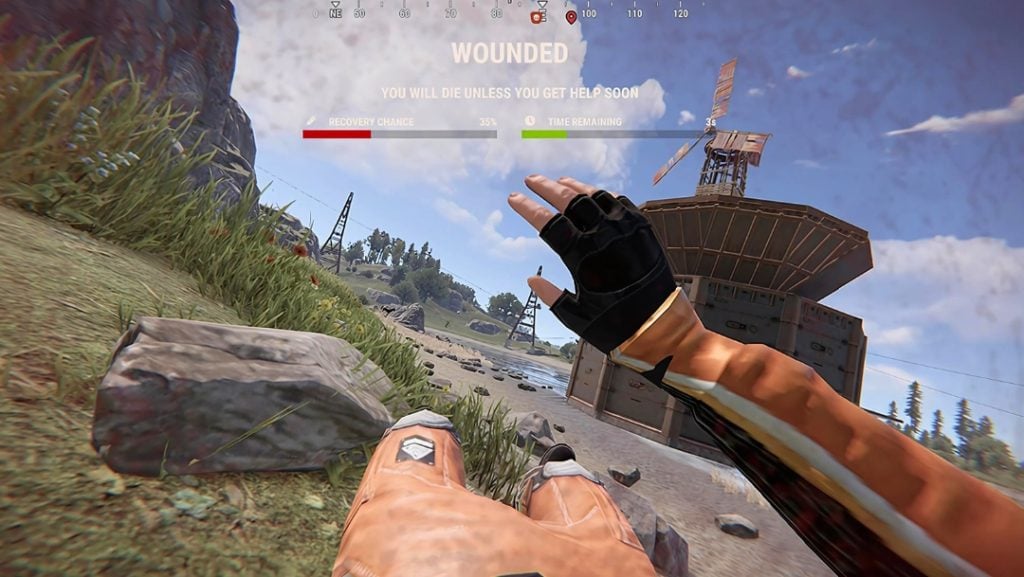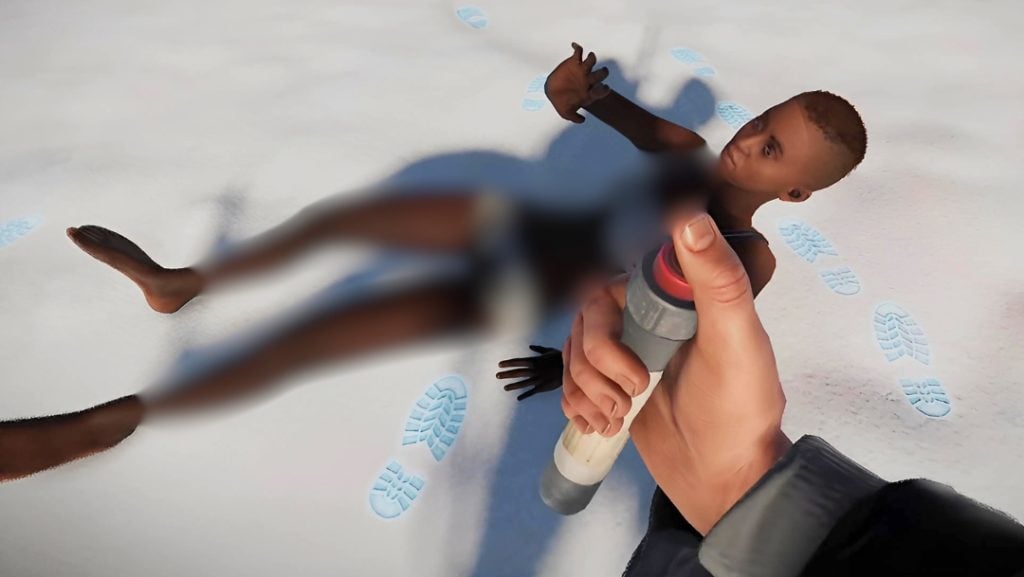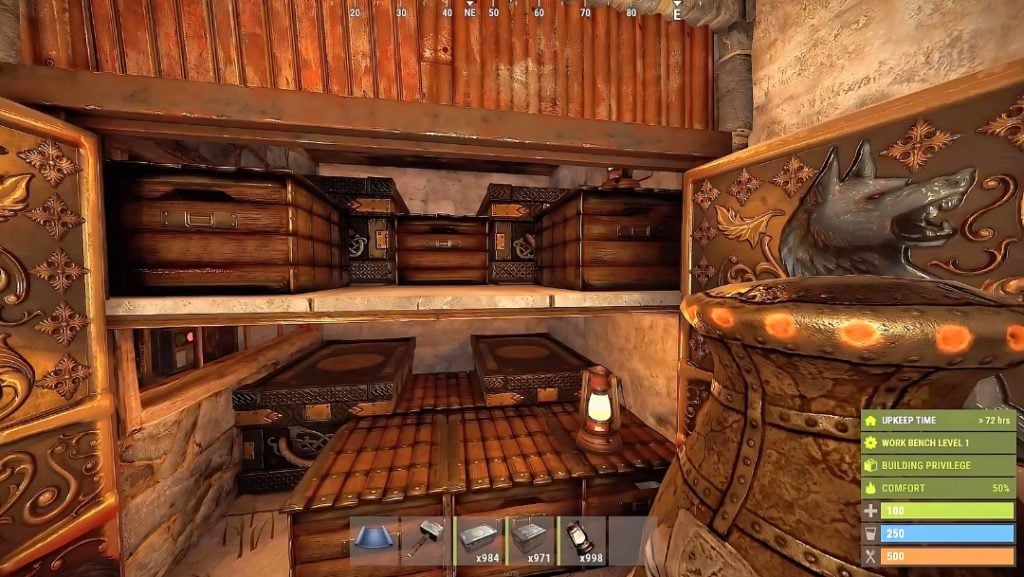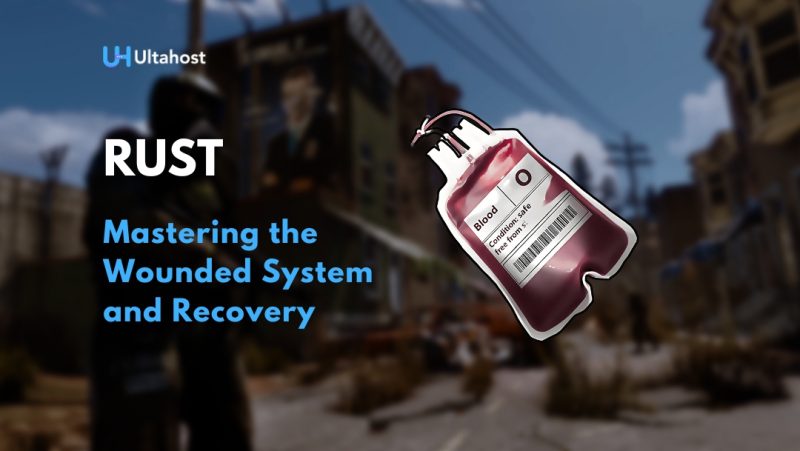In the harsh environment of Rust, it requires fighting others while managing equally trying aspects such as the game’s injury system. Knowing how injuries occur, the implications they would have on general health, and finding successful recovery strategies are very relevant aspects that enable one to survive all the challenges this dynamic game presents.
In this comprehensive guide, we’ll delve into the details of the Rust game injured system, arming you with the basic knowledge required to heal injuries and thrive in its unforgiving environments.
Big fan of survival games? Look into DayZ, loved by tons of players! Get ready for creepy monsters and cool crafting in our helpful guide. Jump into this popular game now!
Causes of Injuries: Identifying Sources

Before explaining how to heal from injuries, it’s crucial to look at the most common causes of injury in Rust:
- Fighting: Players often fight each other, which may lead to injury. One needs to prepare oneself to defend himself against hostile attacks while learning how to avoid incoming attacks at the same time.
- Environmental Hazards: Bad weather, radiation, and toxic gases are significant threats to unaware survivors. The survivor should wear proper protective gear and be aware of environmental hazards to minimize the chances of injury.
- Falls: While traversing rooftops, cliffs, or other elevated terrain, one needs to be extremely careful as falls can cause fractures or severe head injuries.
- Wildlife Encounters: Alert to the environment, notable wild predators such as bears and wolves are known to lie in wait for unsuspecting prey. It is wise to approach wildlife with care and maintain a safe distance whenever possible.
Impact on Health: Evaluating Severity

Each injury impacts a person’s general well-being differently, depending on the type and severity of the condition. For the purposes of this essay, we discuss several categories of wound severity classification and their implications:
- Minor Wounds – These superficial cuts gradually deduct your HP until proper treatment is given. Generally speaking, most minor surface wounds are controlled with the use of basic dressings.
- Moderate Wounds – More serious than minor scrapes, moderate injuries cause continuous HP loss over time. Apply appropriate medical items diligently to alleviate negative effects before seeking further assistance if required.
- Severe Wounds – Deep lacerations demand prompt treatment using higher tier medical equipment. If neglected, severe injuries could incapacitate your character temporarily, rendering you helpless amidst enemy threats.
- Critical Injuries – Extreme traumas such as subarachnoid hemorrhage or broken limbs in numerous places demand the instant attention of specialized doctors. Further delay in the proper treatment would result in devastating consequences, which may end your journey quite abruptly.
Ready, Set, Play & Unlock Victory in Rust!
Enrich your Rust adventure with top notch server hosting from Ultahost. Experience seamless gameplay, reduced lag, and adjustable configurations. Vanquish opponents and rule the post-apocalyptic era with ease, backed by Ultahost’s specialized assets and skilled assistance.
Strategies for Recovery
Having discussed the primary causes of injury and their resulting consequences, we will now discuss effective ways of recovery:

Medical Items: Employing First Aid Supplies
There is a wide variety of medical supplies in Rust that help to heal as quickly and effectively as possible. The most basic resources include:
- Bandages – Very useful for treating minor and moderate wounds. Applying one bandage stops bleeding and recovers about 5 HP. Applying too many bandages in a row, however, has diminishing returns.
- Painkillers – Temporarily dulls pain felt from injuries, making characters able to act despite suffering from reduced HP. However, overuse triggers addiction, which has negative side effects.
- Antibiotics – Prevent infection from unattended injuries. Take antibiotics wisely as overconsumption causes sickness.
- Saline Solution – Cleans bacterial-ridden wounds to lower the odds of infection occurring.
- Medkits – Restores a certain amount of health. Rare med kits provide more restorative power compared to basic kits, which heal immediately. Superior quality medkits grant immunity against debilitating states in addition to restoration of HP.
- Syringes – Potent solutions like morphine, adrenaline, or saline solution-filled syringes rapidly deliver their treatments, which are extremely useful in heavy combats where swift responses mean everything.
Try Gaming VPS Hosting to have a glitch-free experience of Rust. The high-performance server ensures lag-free and high-speed gaming experience with low latency, so you can focus on farming and survival.
Utilizing Home Base Advantages

A fully stored shelter will provide all medical needs at the right moment. Incorporate these elements into your home base plan:
- Room for Medical Inventory – Reserve space specifically for storing health care supplies. Keep surpluses here to distribute to allies or use in case of future emergencies.
- Resupply Box – Stockpile commonly used medical products near each of the dwelling’s strategic hotspots. Quick access saves important seconds in desperate situations.
- Sleeping Bags – Create several areas in the shelter as easily accessible spawn points after respawn. Reduce the travel time as much as possible by placing these close to important buildings.
Managing Advanced Wound Types
Certain types of injury demand specific treatment; resourceful players need to learn how to deal with those situations effectively:
- Severe Bleeding – Stop blood loss by rebandaging the wound frequently until it becomes steady. If signs do not improve, attempt using applied pressure methods with strips of cloth or tourniquets. Remember that protracted bleeding depletes endurance resources, making casualties vulnerable to additional injury.
- Compound Fractures – Immobilize affected limbs right after identification to avoid worsening current fractures. Thereafter, place splints or slings to facilitate faster recovery speed.
- Food Poisoning – Resulting from consuming rotten foodstuffs, poisoning slows down the movement speed and mental capabilities. Take charcoal pills to neutralize toxic accumulation and speed up the recovery time.
Experience smooth gameplay with the help of NVMe storage solution for Rust. Reduces load time and enhances overall performance due to high speed data transfer. Most importantly, the feature is an important one because it helps a player navigate all the fast-paced challenges of the game, in addition to giving one an added advantage in their survival fight.
Collaborative Teamwork
Alliances developed in Rust give great benefits related to group healing potential. Advantages include:
- Share Supply – Distributing shared responsibility to maintain group medicine supplies ensures that there will always be available supplies.
- Mutual Support – Team members can support each other during trying times, such as controlling bleeding, administering medication, or providing protective shielding.
- Coordinated efforts – Organized groups can ensure effective role allocation to match the abilities of each member, so resources and manpower are utilized as effectively as possible. For example, expert members may gather rare medicinal parts while novice members create lesser-tier items.
Moreover, co-operative exploration also reduces danger and mitigates the risk of the entire group experiencing injury. Use of voice communication software enables smooth co-ordination with swift response times and greater situational awareness.
Ultimately, it will give the player the ability to traverse dangerous terrain with confidence, enduring hardships while continually honing skills. With this extensive guide, venture into Rust’s turbulent universe, ready to overcome obstacles and prevail against formidable opponents.
Embracing Challenges: Overcoming Obstacles
Adversity breeds growth, forcing survivors to think and plan creatively to outmaneuver the opponent. Success is achieved through resourcefulness, determination, and the skill in the timing of interventions. In order to best promote survivability:
- Prioritize Essential Tasks – Address urgent issues first, before giving attention to non-urgent ones. Stop bleeding and fix broken bones first, before spending time on the minor bruises and scrapes.
- Optimize Use of Equipment – Choose optimal medical equipment based on common scenarios. In long battles, use analgesic agents wisely to maintain clarity during chaos.
- Monitor Progress – Periodically check the personal status and correct it appropriately. Keep up remedial measures till complete recovery is attained.
- Learn From Mistakes – Reflect on past experiences to identify areas warranting improvement. Regular assessment enables steady advancements toward mastering the art of survival.
By internalizing these principles and honing the related skillsets, even greenhorn adventurers stand tall against seasoned adversaries. Through persistent practice and determination, aspiring champions rise through the leaderboards and cement legacies within the expansive community of Rust.
Conclusion
Mastering the twisting corridors of Rust requires guile, tenacity, and deep understanding of its subtle mechanics. Foremost among these is the Rust wounded system, controlling a multitude of aspects associated with self-preservation. Parlaying gained knowledge and personifying tactical brilliance move people up the road to success, turning everyday players into legendary heroes envied throughout virtual realities. So gear up, valiant warriors, embark on electrifying adventures, and conquer the ruthless battlefields awaiting.
If you enjoy the Rust Wound Guide then you’ll love elevating your gameplay with Ultahost’s Gaming hosting. Experience seamless hosting for your favorite games and elevate your gaming experience with reliable and high performance servers. Stay tuned for more survival tips and tricks, and keep on surviving.
FAQ
What are common causes of injuries in Rust?
Injuries in Rust can be caused by combat, environmental hazards, falling, and encounters with wild animals.
How does the level of severity affect a player’s health in Rust?
The degree of severity depends on the type and extent of the wound, leading to gradual health reduction for minor injuries and requiring immediate attention for critical injuries.
Which medical item stops bleeding in Rust?
Using bandages helps stop a character’s bleeding in Rust.
Why is having a well equipped home base advantageous in Rust?
Having a home base stocked with medical supplies provides a secure respawn area for healing, keeping the risk of running long distances after respawning to a minimum.
How do you handle heavy bleeding and compound fractures in Rust?
Stop heavy bleeding by continuously dressing wounds and immobilize affected limbs with splints or slings for compound fractures.
What role does team dynamics play in healing in Rust?
Team dynamics allow for collaborative healing, including supply sharing, mutual support, and organized exploration, enhancing survivability in Rust.
How can newcomers improve their chances of survival in Rust?
Newcomers can enhance their survivability in Rust by prioritizing tasks, optimizing equipment usage, monitoring progress, and learning from mistakes.








